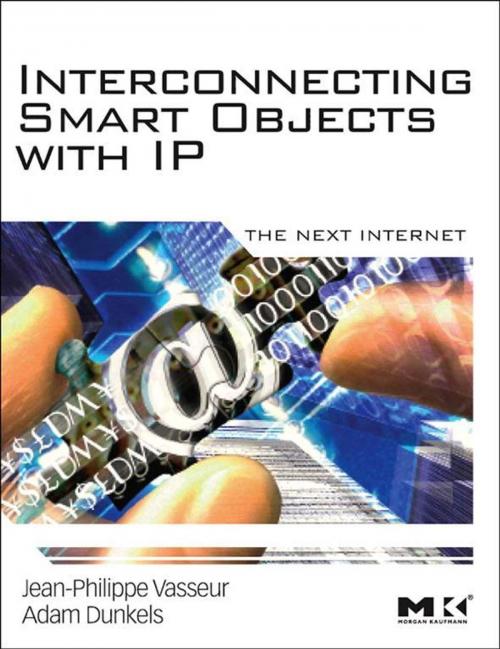Interconnecting Smart Objects with IP
The Next Internet
Nonfiction, Computers, Networking & Communications, General Computing, Internet| Author: | Adam Dunkels, Jean-Philippe Vasseur, M.S. in Computer Science | ISBN: | 9780123751669 |
| Publisher: | Elsevier Science | Publication: | July 6, 2010 |
| Imprint: | Morgan Kaufmann | Language: | English |
| Author: | Adam Dunkels, Jean-Philippe Vasseur, M.S. in Computer Science |
| ISBN: | 9780123751669 |
| Publisher: | Elsevier Science |
| Publication: | July 6, 2010 |
| Imprint: | Morgan Kaufmann |
| Language: | English |
Interconnecting Smart Objects with IP: The Next Internet explains why the Internet Protocol (IP) has become the protocol of choice for smart object networks. IP has successfully demonstrated the ability to interconnect billions of digital systems on the global Internet and in private IP networks. Once smart objects can be easily interconnected, a whole new class of smart object systems can begin to evolve. The book discusses how IP-based smart object networks are being designed and deployed.
The book is organized into three parts. Part 1 demonstrates why the IP architecture is well suited to smart object networks, in contrast to non-IP based sensor network or other proprietary systems that interconnect to IP networks (e.g. the public Internet of private IP networks) via hard-to-manage and expensive multi-protocol translation gateways that scale poorly. Part 2 examines protocols and algorithms, including smart objects and the low power link layers technologies used in these networks. Part 3 describes the following smart object network applications: smart grid, industrial automation, smart cities and urban networks, home automation, building automation, structural health monitoring, and container tracking.
- Shows in detail how connecting smart objects impacts our lives with practical implementation examples and case studies
- Provides an in depth understanding of the technological and architectural aspects underlying smart objects technology
- Offers an in-depth examination of relevant IP protocols to build large scale smart object networks in support of a myriad of new services
Interconnecting Smart Objects with IP: The Next Internet explains why the Internet Protocol (IP) has become the protocol of choice for smart object networks. IP has successfully demonstrated the ability to interconnect billions of digital systems on the global Internet and in private IP networks. Once smart objects can be easily interconnected, a whole new class of smart object systems can begin to evolve. The book discusses how IP-based smart object networks are being designed and deployed.
The book is organized into three parts. Part 1 demonstrates why the IP architecture is well suited to smart object networks, in contrast to non-IP based sensor network or other proprietary systems that interconnect to IP networks (e.g. the public Internet of private IP networks) via hard-to-manage and expensive multi-protocol translation gateways that scale poorly. Part 2 examines protocols and algorithms, including smart objects and the low power link layers technologies used in these networks. Part 3 describes the following smart object network applications: smart grid, industrial automation, smart cities and urban networks, home automation, building automation, structural health monitoring, and container tracking.
- Shows in detail how connecting smart objects impacts our lives with practical implementation examples and case studies
- Provides an in depth understanding of the technological and architectural aspects underlying smart objects technology
- Offers an in-depth examination of relevant IP protocols to build large scale smart object networks in support of a myriad of new services















